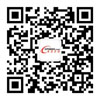New Vishay Siliconix SPDT Analog Switches
2006/5/9 10:07:06
威世國際貿易(上海)有限公司 供稿
New Vishay Siliconix SPDT Analog Switches Provide Low 0.4-Ω On-Resistance, Low Operating Range of 1.6 V to 4.3 V
SANTA CLARA, CALIFORNIA — May 8, 2006 — Vishay Intertechnology, Inc. (NYSE: VSH) today released three dual single-pole/double-throw (SPDT) monolithic CMOS analog switches that combine a low voltage operating range and low on-resistance ratings in a small package size for signal routing applications in portable and battery-powered end products.
The new DG2731, DG2732, and DG2733 analog switches are intended for use in cell phones, PDAs, portable media players, speaker headsets, hard drives, and modems.
Operating over a single-supply operating voltage range of 1.6 V to 4.3 V, the three new analog switches feature an on-resistance of only 0.4 ohms at maximum power and delta rON of just 0.03 ohms, lowering distortion and improving signal fidelity. Compatible with 1.6-V logic, they are easily interfaced with low-voltage DSP or MCU control logic, making them well-suited for direct power from a one-cell Li-ion battery.
The devices’ latch-up protection is greater than 300 mA as tested per JESD78, thanks to Vishay’s sub-micron CMOS low-voltage process technology. They conduct signals within power rails equally well in both directions when on, and block signals up to the power supply level when off, with guaranteed break-before-make. Switching is fast, with a 50-ns turn-on time and 14-ns turn-off time at 4.3 V.
Two of the switches — DG2731 and DG2732 — have two separate control pins with reverse control logic. DG2731 has two switches that are normally open and two that are normally closed, while DG2732 has three normally open switches and one normally closed. Like DG2731, DG2733 has two normally open and two normally closed switches, and it also features an EN pin to enable it when the logic is high.
All three are available in a choice of two compact cases that enable smaller end products: DFN-10 with lead (Pb)-free nickel-palladium-gold device terminations (represented by the “-E4” suffix), and MSOP-10 with 100% tin matte terminations, also lead (Pb)-free (“-E3” suffix). Both types of terminations meet all JEDEC standards for reflow and MSL ratings. They operate over a temperature range of -40 °C to +85 °C. Samples and production quantities of the new analog switches are available now, with lead times of 8 to 12 weeks for larger orders.
JPEG Image (< 500k)
Vishay Intertechnology, Inc., a Fortune 1,000 Company listed on the NYSE (VSH), is one of the world's largest manufacturers of discrete semiconductors (diodes, rectifiers, transistors, and optoelectronics and selected ICs) and passive electronic components (resistors, capacitors, inductors, sensors, and transducers). Vishay's components can be found in products manufactured in a very broad range of industries worldwide. Vishay is headquartered in Malvern, Pennsylvania, and has operations in 17 countries employing over 26,000 people. Vishay can be found on the Internet at http://www.vishay.com.
SANTA CLARA, CALIFORNIA — May 8, 2006 — Vishay Intertechnology, Inc. (NYSE: VSH) today released three dual single-pole/double-throw (SPDT) monolithic CMOS analog switches that combine a low voltage operating range and low on-resistance ratings in a small package size for signal routing applications in portable and battery-powered end products.
The new DG2731, DG2732, and DG2733 analog switches are intended for use in cell phones, PDAs, portable media players, speaker headsets, hard drives, and modems.
Operating over a single-supply operating voltage range of 1.6 V to 4.3 V, the three new analog switches feature an on-resistance of only 0.4 ohms at maximum power and delta rON of just 0.03 ohms, lowering distortion and improving signal fidelity. Compatible with 1.6-V logic, they are easily interfaced with low-voltage DSP or MCU control logic, making them well-suited for direct power from a one-cell Li-ion battery.
The devices’ latch-up protection is greater than 300 mA as tested per JESD78, thanks to Vishay’s sub-micron CMOS low-voltage process technology. They conduct signals within power rails equally well in both directions when on, and block signals up to the power supply level when off, with guaranteed break-before-make. Switching is fast, with a 50-ns turn-on time and 14-ns turn-off time at 4.3 V.
Two of the switches — DG2731 and DG2732 — have two separate control pins with reverse control logic. DG2731 has two switches that are normally open and two that are normally closed, while DG2732 has three normally open switches and one normally closed. Like DG2731, DG2733 has two normally open and two normally closed switches, and it also features an EN pin to enable it when the logic is high.
All three are available in a choice of two compact cases that enable smaller end products: DFN-10 with lead (Pb)-free nickel-palladium-gold device terminations (represented by the “-E4” suffix), and MSOP-10 with 100% tin matte terminations, also lead (Pb)-free (“-E3” suffix). Both types of terminations meet all JEDEC standards for reflow and MSL ratings. They operate over a temperature range of -40 °C to +85 °C. Samples and production quantities of the new analog switches are available now, with lead times of 8 to 12 weeks for larger orders.
JPEG Image (< 500k)
Vishay Intertechnology, Inc., a Fortune 1,000 Company listed on the NYSE (VSH), is one of the world's largest manufacturers of discrete semiconductors (diodes, rectifiers, transistors, and optoelectronics and selected ICs) and passive electronic components (resistors, capacitors, inductors, sensors, and transducers). Vishay's components can be found in products manufactured in a very broad range of industries worldwide. Vishay is headquartered in Malvern, Pennsylvania, and has operations in 17 countries employing over 26,000 people. Vishay can be found on the Internet at http://www.vishay.com.
免責聲明:本文僅代表作者個人觀點,與電源在線網無關。其原創性以及文中陳述文字和內容未經本站證實,對本文以及其中全部或者部分內容、文字的真實性、完整性、及時性本站不作任何保證或承諾,請讀者僅作參考,并請自行核實相關內容。
本文鏈接:New Vishay
http:www.mangadaku.com/news/2006-5/2006591076.html
http:www.mangadaku.com/news/2006-5/2006591076.html



